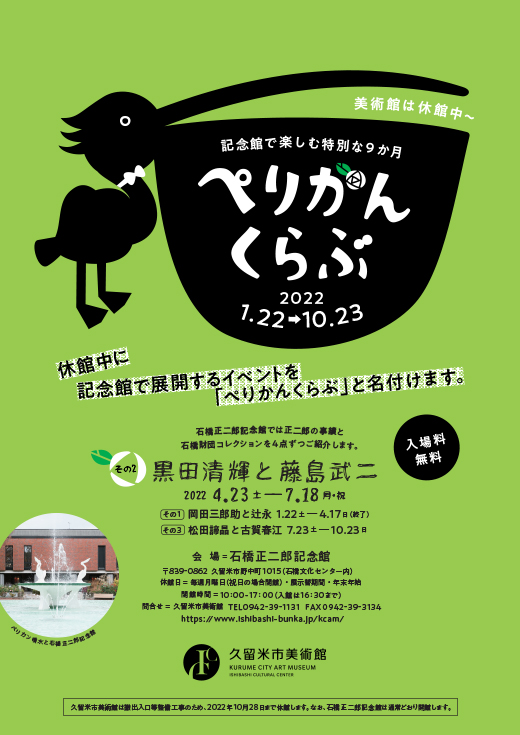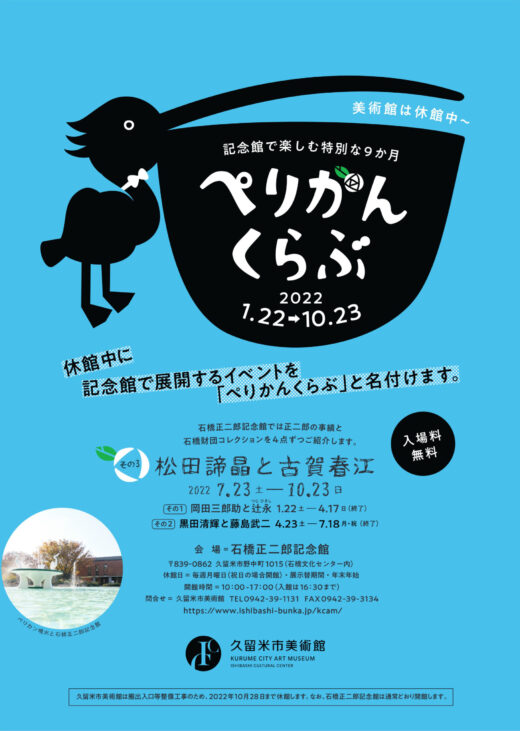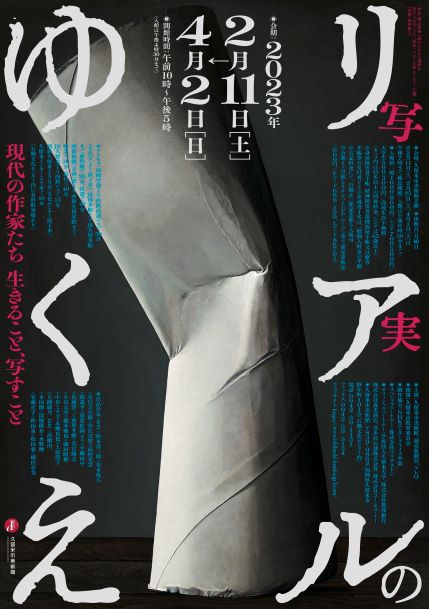Exhibition
April 2022 - March 2023
-

Pelican Club, Part 2. Kuroda Seiki and Fujishima Takeji2022.04.23(Sat)-2022.07.18(Mon)
Kuroda Seiki and Fujishima Takeji were both born in Kagoshima at a time when the Meiji era was about to begin, Fujishima one year after Kuroda. It would be no exaggeration to say that they are the two great masters of modern Japanese Western-style painting. Whereas Kuroda studied Western-style painting in France, Fujishima began by studying Japanese-style painting in Japan and later switched to Western-style painting. The two men met when Kuroda returned from studying abroad and were to promote modern Japanese Western-style painting together. Through the works on display, we shall examine the relationship between Kuroda and Fujishima. We shall also introduce how the works by Fujishima Takeji form the core, together with works by Aoki Shigeru, of Ishibashi Shojiro’s collection
-

Pelican Club, Part 3. Matsuda Teisho and Koga Harue2022.07.23(Sat.)-2022.10.23(Sun)
Matsuda Teisho and Koga Harue were both born in Kurume. Seven years older than Koga, Matsuda was Koga’s art teacher. Koga won the Nika Prize at the ninth Nika Exhibition in 1922 and proceeded as an avant-garde artist. Meanwhile, Matsuda remained in Kurume and chose to pursue a career in bringing up the next generation. Koga looked up to Matsuda as if he were an elder brother and looked forward to going on sketching excursions with him. The works on display focus on the relationship between these two painters. There is also mention of associating with Ishibashi Shojiro in Matsuda’s diary. Most of Koga’s works were purchased by Shojiro on the occasion of the opening of the Ishibashi Museum of Art in 1956.
-

What Is Real?—Contemporary Artists—Living and Depicting2023.02.11(Sat.)-2023.04.02(Sun)
Before Western realism was introduced into Japan, there was a realism native to Japan identifiable in Buddhist sculptures of the Kamakura period and jizai okimono (articulated iron figures of animals) of the Edo period. Through the ages, the methods of expression and sensibilities have been commingled with Western realistic expressions and are inherited by contemporary artists, too. In this exhibition, with oil paintings by Takahashi Yuichi and iki-ningyo (lifelike dolls) by Matsumoto Kisaburo and others as an introduction, works by currently active artists are introduced. We hope to explore what Japanese “realism” inexplicable within the Western context was and how it came into being.
